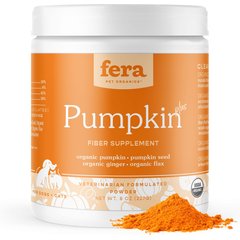How to Feed Dogs with Lymphangiectasia
I have a feeling that if you haven’t taken care of a dog with lymphangiectasia you’ve probably never heard of the disease. Here are some definitions that you’ll need if you want to learn about how to feed dogs with this condition.
Chyle n. a milky fluid formed in the intestines. Chyle transports fats and other materials from the gastrointestinal tract to the rest of the body - chylous adj.
Lymph n. the fluid that carries lymphocytes, chyle and other substances as it circulates through special ducts and in the bloodstream, surrounds tissues, is filtered by lymph nodes.
Lymphangiectasia n. a disease in which the ducts carrying lymph leak protein and other substances into the intestinal tract. Affected individuals can develop diarrhea, abnormal fluid accumulations and lose weight.
Protein losing enteropathy n. any intestinal disease that results in a leakage of protein into the intestinal tract (e.g. lymphangiectasia, paratuberculosis and inflammatory bowel disease).
Lymphangiectasia can be a primary, idiopathic disease, which means that it develops on its own and we don’t know why. Sometimes, however, lymphangiectasia is a secondary disease, meaning it is caused by another condition, such as cancer or inflammatory disorders that obstruct the flow of lymph within the wall of the intestinal tract. In either case, dietary modification is an important part of treatment.
When fat is eaten, it is transformed into lymph, which must be carried through the intestinal lymphatic ducts that are not working properly when a dog has lymphangiectasia. By limiting a dog’s fat intake, we can reduce the amount of intestinal lymph that is formed, which reduces pressure within these faulty ducts. Less pressure means less lymph leakage and a reduction, or even an elimination, of symptoms. Diets for dogs with lymphangiectasia should not have more than 20% of their calories coming from fat.
The lymph that leaks into a dog’s intestines with lymphangiectasia contains a lot of protein. Therefore, protein is another nutrient of concern with this condition. The amount of protein contained in lymphangiectasia diets doesn’t necessarily have to be any higher than would normally be recommended for a similar, healthy dog, but it should be of the highest quality to maximize the dog’s ability to make use of it. A protein percentage of around 25% should be sufficient.
When dogs have un- or poorly-controlled lymphangiectasia for a long period of time, they may become deficient in cobalamin (vitamin B-12) and the fat soluble vitamins A, D, E, and K. Supplementation may be needed, at least until the dog’s intestinal function has improved to the point where these nutrients can be absorbed more normally from food.
Dogs who can’t be managed with diet alone will usually be given prednisone to reduce the intestinal inflammation associated with lymphangiectasia. Some dogs can eventually be weaned off prednisone, while others cannot. Additional treatments (e.g., immunosuppressive drugs) may also be needed in severe or secondary cases of lymphangiectasia.
Resources
Dictionary of Veterinary Terms: Vet-speak Deciphered for the Non-Veterinarian. Coates J. Alpine Publications. 2007.
Related
Lymph Node Inflammation, Intestinal Tract (Lymphangieasia) in Dogs
Recommended Pet Products

